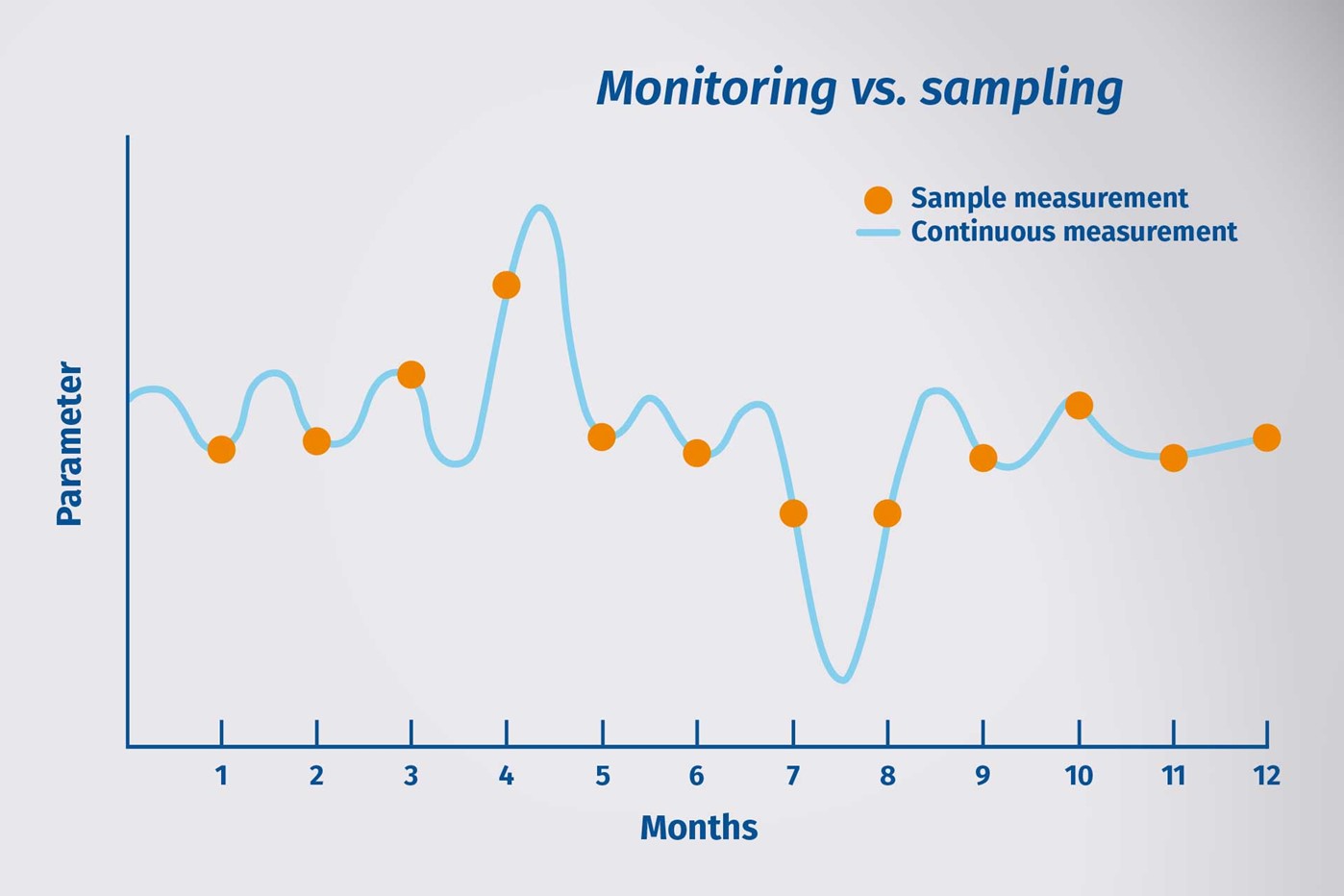When the days get warmer in spring and summer, the risk of blue-green algae, or cyanobacteria, increases. The growth of blue-green algae is a sign that the water quality is declining: there are more nutrients such as nitrogen and phosphorus in the water on which these bacteria thrive. Many species of blue-green algae produce toxic substances that are harmful to humans and animals.
For humans, exposure to blue-green algae causes skin and eye irritations, possible allergic reactions, and stomach pain and diarrhea if contaminated water is swallowed. Water with blue-green algae is therefore best avoided, but that makes water recreation impossible. This can have major economic consequences, especially in the summer. The presence of these organisms in the water also makes the production of drinking water more complicated and expensive.
Continuous measurement can help to get a better grip on blue-green algae. You can detect when algal blooms occur in real time, and take timely measures to prevent worse problems. It is a valuable replacement or addition to manual measuring, which often has with longer intervals and takes more time.
Continuous measurement shows all fluctuations in water quality, including those caused by sudden weather changes. This lets you detect the growth of blue-green algae sooner, which can also speed up response time.

One way to combat algal blooms is inlet management: clean water is let in so that the polluted water dilutes when the blue-green algae exceeds a certain value. This prevents the bacteria from multiplying.
The combination of monitoring blue-green algae with other water parameters can also help to predict the growth of algae, by linking the growth to other values such as an increase in temperature, turbidity or the presence of certain substances in the water.

Blue-green algae are cyanobacteria that live on light, carbon dioxide and nutrients in the water. The presence of nutrients in the water can increase during heavy rainfall, for example, when fertilisers for agriculture wash away in the surface water.
But a sewer overflow also causes a sudden increase in nutrients, or eutrophication of the water.
The presence of blue-green algae can be recognized by a blue/green floating layer in the water. When the bottom of this layer starts to die off, it releases toxins into the water which are harmful for both humans and animals when they come into contact with the water.
The floating layer of algae also means that less sunlight can penetrate the water and reach the plants growing there, which can therefore produce less oxygen. This ultimately leads to fish mortality.
Tackling algal blooms in good time therefore has many advantages. Discover our products for algae analysis or contact our water quality specialist.